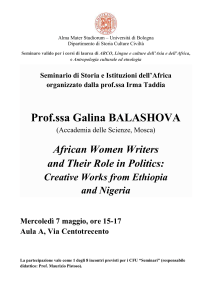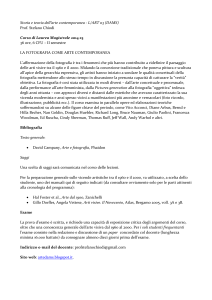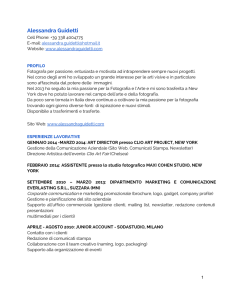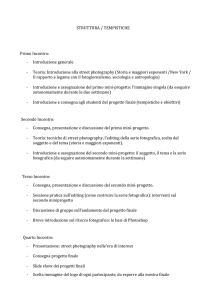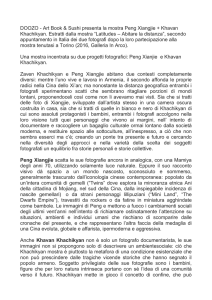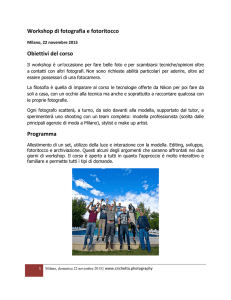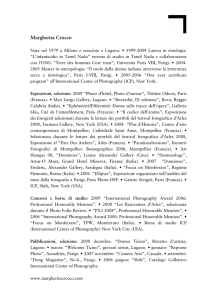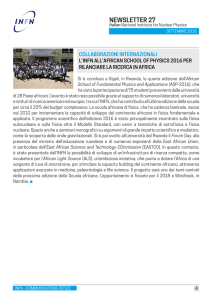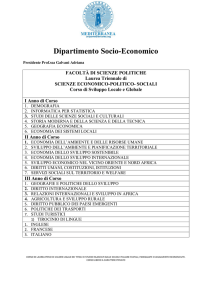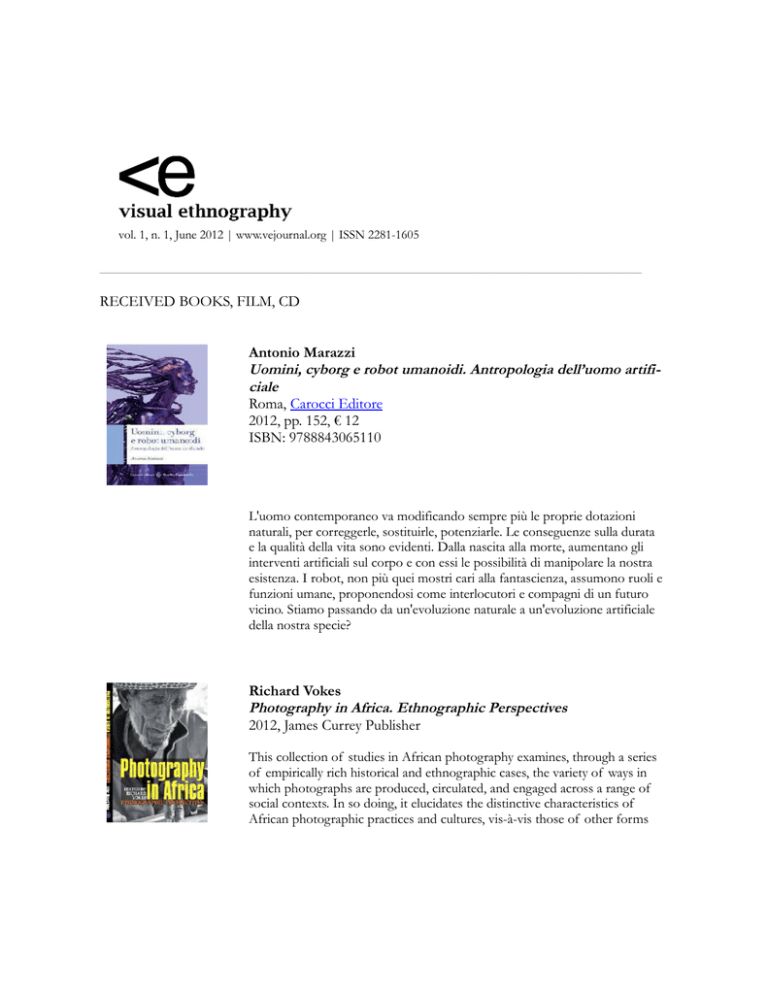
vol. 1, n. 1, June 2012 | www.vejournal.org | ISSN 2281-1605
________________________________________________________________________
RECEIVED BOOKS, FILM, CD
Antonio Marazzi
Uomini, cyborg e robot umanoidi. Antropologia dell’uomo artificiale
Roma, Carocci Editore
2012, pp. 152, € 12
ISBN: 9788843065110
L'uomo contemporaneo va modificando sempre più le proprie dotazioni
naturali, per correggerle, sostituirle, potenziarle. Le conseguenze sulla durata
e la qualità della vita sono evidenti. Dalla nascita alla morte, aumentano gli
interventi artificiali sul corpo e con essi le possibilità di manipolare la nostra
esistenza. I robot, non più quei mostri cari alla fantascienza, assumono ruoli e
funzioni umane, proponendosi come interlocutori e compagni di un futuro
vicino. Stiamo passando da un'evoluzione naturale a un'evoluzione artificiale
della nostra specie?
Richard Vokes
Photography in Africa. Ethnographic Perspectives
2012, James Currey Publisher
This collection of studies in African photography examines, through a series
of empirically rich historical and ethnographic cases, the variety of ways in
which photographs are produced, circulated, and engaged across a range of
social contexts. In so doing, it elucidates the distinctive characteristics of
African photographic practices and cultures, vis-à-vis those of other forms
of 'vernacular photography' worldwide. In addition, these studies develop a
reflexive turn, examining the history of academic engagement with these
African photographic cultures, and reflecting on the distinctive qualities of
the ethnographic method as a means for studying such phenomena. The
volume critically engages current debates in African photography and visual
anthropology. First, it extends our understanding of the variety of ways in
which both colonial and post-colonial states in Africa have used photography
as a means for establishing, and projecting, their authority. Second, it moves
discussion of African photography away from an exclusive focus on the role
of the 'the studio' and looks at the circulations through which the studios '
products - the photographs themselves - later pass as artefacts of material
culture. Last, it makes an important contribution to our understanding of the
relationship between photography and ethnographic research methods, as
these have been employed in Africa.
Adriana Destro (a cura)
Rappresentare. Questioni di antropologia, cinema, narrativa
Bologna, Clueb, 2012
Saggi di Francesca Ferrucci, Sara Pesce, Zelda Alice Franceschi, Valentina Peveri,
Francesca Sbardella, Adriana Destro, Mauro Bucci
Che tipo di attività è il "rappresentare"? Ininterrottamente, rappresentiamo
mondi e fantasie, in modi complessi o addirittura densi e contorti: una
rappresentazione non è mai lineare, neutra o solo descrittiva. Un'immagine o
una narrazione non trasmettono mai le stesse sensazioni, inducono piuttosto
effetti percettivi differenziati da individuo a individuo. Col nostro
"rappresentare", in sostanza, cerchiamo di capire le traiettorie e le
immaginazioni altrui e di riprodurle con disinvoltura con sensibilità e
prudenza, a volte con timore. Il "rappresentare" che altri fanno, nel
contempo, ci rende perplessi o ci affascina con l'intreccio d'immagini e figure,
concetti, teorie e scritture. Ci sentiamo talora smarriti o irritati davanti a
scenari brutali, a errori, a falsi, a prospettive sbagliate e reagiamo per mettere
al riparo le nostre concezioni o contrattaccare. Tutto questo significa che
quando cerchiamo di sondare e visualizzare vicende, ambienti, soggetti, le
rappresentazioni che produciamo e di cui ci alimentiamo non diventano
occasioni di pura riflessione.

